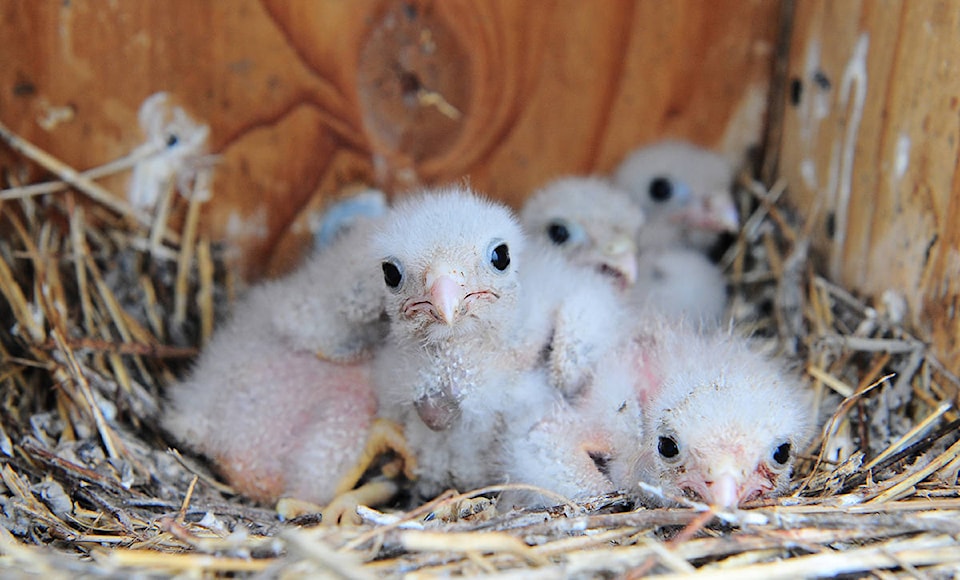American Kestrels are one of my favourite bird species. Colorful, tiny and fierce, they hold the distinction of being both North America’s smallest falcon and the only hawk species to nest in cavities. Historically called the “sparrow hawk,” this species is declining across much of its range. Thankfully, they still seem to be fairly common in Central Alberta, where they are usually seen perched on power line wires or poles that bisect open grasslands and parklands. Their hunting method – hovering into the wind – is very distinctive, and the adults can be easily differentiated by their plumage: the males have blue-gray wings and a more colourful head pattern than the females.
Many years ago, I built and set out several kestrel boxes near our Rimbey-area farm. I was thrilled when one pair took up residence, offering me the opportunity to watch the adults and see the nestlings up close. More recently, I have appreciated the opportunity to check boxes with other kestrel enthusiasts.
How ugly the young are when first hatched, and how quickly they grow. Unique among birds, nestling kestrels have a very creative way of disposing of their feces; they back up, lift their tails and squirt it on the roof and walls of the cavity! I remember being shocked and surprised to open up a box with week-old chicks. I was taken aback by both their cute-but-ugly faces and the smelly fecal wallpaper they were creating inside the box.
Although kestrels will take the odd songbird, they eat mostly grasshoppers, beetles, dragonflies, spiders, butterflies, moths and small mammals. Interestingly, they can use their ability to see ultraviolet light to track voles and other small mammals by following urine trails. If hunting is good, they will cache surplus prey in/on hiding spots such as bushes, grassy clumps, tree limbs and cavities. Because of their small size, they often fall prey to larger hawks and owls.
American kestrels are migrants, usually arriving in Alberta each spring in April and then departing in October. Overwintering records are rare, so I was grateful for the opportunity to watch and photograph a lone male kestrel that decided to hang around a subdivision south of Calgary a couple winters ago. Residents in this subdivision fed a large population of house sparrows, so this bird decided (either by choice or because of some ailment) that it would just stay behind and avail itself of easy pickings. Each day, it took a sparrow or two and, according to the bird watchers in the area, thrived for the entire winter.
If you are interested in setting out nestboxes for American Kestrels, the Alberta Conservation Association has an excellent downloadable booklet with all the details (http://www.ab-conservation.com/downloads/educational_materials/brochures/nest_box_guide_and_instructions.pdf).
Additional images of American Kestrels can be found on my blog (www.myrnapearman.com/blog).
Myrna Pearman is the Biologist at Ellis Bird Farm. She can be reached at mpearman@ellisbirdfarm.ca.
